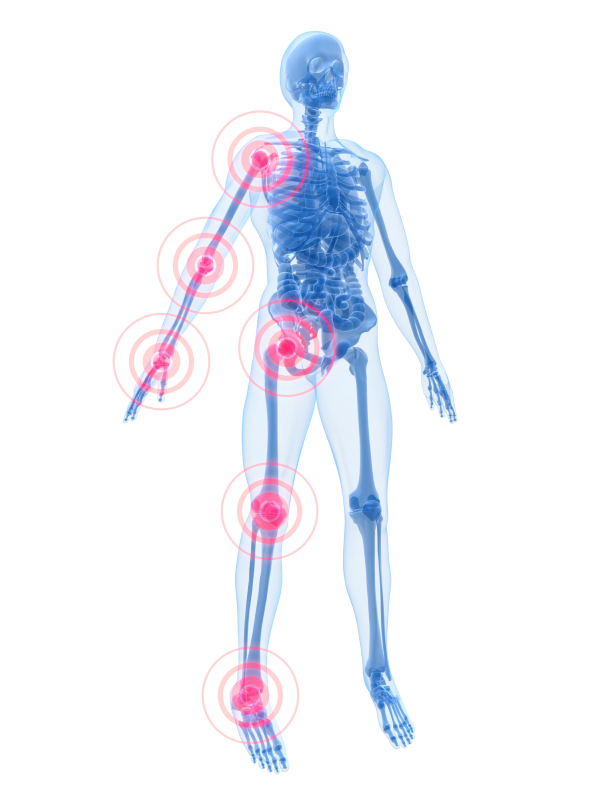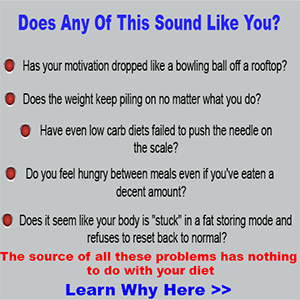These Hormones Are Making 3,000+ Wonderful Cells TOXIC
By Kevin DiDonato MS, CES--Level 1 Certified Precision Nutrition and Certified Personal Trainer
 There are many people who are trying to lose weight.
There are many people who are trying to lose weight.
However, losing weight today is a much different process that it has been previously.
Factors such as diet and physical activity levels are a lot different today than in previous years.
This could account for some of the changes that have led to the development of “sick” fat cells, commonly referred to as "toxic fat cells."
Today, research shows that fat cells should be considered an endocrine organ similar to your thyroid and pancreas, due to their ability to secrete hormones that could affect metabolism.
Fat cells release many hormones which help regulate energy levels in your fat cells and boost metabolism and fat burning.
However, research also shows that fat cells release pro-inflammatory molecules, which can increase inflammation in your fat cells.
This can lead to resistance of your cells to the powerful hormones that are responsible for boosting fat metabolism.
The following is a list of the top three Adipokines That You Need To Worry About
SAA
SAA is another name for serum amyloid A which is an acute phase protein.
Research shows that high levels of SAA can be associated with increased inflammation and could also play a role in the development of atherosclerosis.
Doctors use SAA levels to determine the extent of cardiovascular diseases, or to determine if there was a cardiovascular event.
SAA is an important molecule that also has been associated with insulin resistance, obesity, and Type II Diabetes.
It can be secreted by fat tissue (adipocytes) and, in cases of diabetes and obesity, there is an increase in the production and the secretion of SAA.
The problem with high levels of SAA, according to research, is that increased levels of SAA alter the way the body processes lipoproteins (cholesterol).
In fact, it has been shown that SAA promotes the ingestion of HDL cholesterol (your good cholesterol) by macrophages, which reduces the cardio-protective benefits of HDL cholesterol.
Increased levels of SAA could potentially lead to systemic inflammation, heart disease, and toxic fat cells.
IL-6
IL-6 is the abbreviated term for interleukin-6, which is a pro-inflammatory cytokine release by many different cells in your body and your fat cells.
 When inflammation is not present, however, roughly 15 to 30 percent of IL-6 released comes from adipose tissue.
When inflammation is not present, however, roughly 15 to 30 percent of IL-6 released comes from adipose tissue.
There are two different types of fat in your body: adipose and visceral.
IL-6 is released by both fat tissues, however, visceral fat releases roughly three times the amount of IL-6 compared to white adipose tissue.
IL-6 affects many different cells in your body and, according to some research, is the main driving force behind the release of C-reactive proteins from your liver.
There has also been a positive relationship between IL-6 levels (release from adipose tissue) and circulating C-reactive protein levels.
IL-6 cytokines released from visceral adipose tissue could result in increased health risks.
It has been shown that increased IL-6 from intra-abdominal fat (visceral) could impair liver metabolism.
This could lead to an increased release of triglycerides from the liver, which is termed visceral-related triglyceridemia.
Higher triglycerides can lead to heart disease and other chronic diseases.
IL-6 also could increase insulin resistance, which makes it harder for your body to process sugar from your blood, liver, and muscles.
This has the potential to increase inflammation and decrease the release of beneficial hormones such as Adiponectin and Leptin from your fat cells.
Visfatin
Visfatin is a new molecule that has been discovered that could also lead to increased levels of inflammation.
Made and secreted by visceral adipose tissue, research shows, visfatin is a result of adipocyte (fat cells) 
differentiation.
Adipocyte differentiation is a process where unspecialized cells take on the specialized features of adipose cells, in order to synthesize and store dietary fat.
Research suggests that visfatin could be an inflammatory mediator, and is responsible for the increased activation of pro-inflammatory mediators such as TNF-alpha, MP-9, and IL-8.
Free Your Toxic Fat Cells
Toxic fat cells could help prevent weight loss and increase the secretion of pro-inflammatory cytokines, which can increase inflammation levels in your fat cells and in your body.
Diet and exercise have been shown to increase weight and fat loss, potentially returning your fat cells back to healthy cells.
However, when your fat cells are toxic, either resistance to powerful fat burning hormones or the secretion of these hormones may be decreased.
By making your fat cells healthy again, you could increase fat loss and boost your metabolism in the process.
References:
Antuna-Puente, B. Fevee,m B. Fellahim, S. Bastard, JP. Adipokines: The missing link between insulin resistance and obesity. Diabetes $ Metabolism. 2008. Vol. 34:pp.2-11.
About Jayson Hunter & Jaylab Pro

Jaylab Pro was founded by Registered Dietitian Jayson Hunter. Jayson has been recognized as one of America's foremost weight loss experts by America's Premier Experts™. He has also been featured in USA Today for this accomplishment. Jayson is also a best-selling author having co-authored multiple books in health & fitness and business growth. Jayson and the Jaylab Pro team are proud to create content that helps improve the lives of millions of people around the world. We hope you enjoy it just as much as others have.
 If you order a JayLabPro SmartShip product or any Combo Package, we will automatically ship you a new supply of the product or products you have ordered every month, starting 30 days after your initial order is shipped, and continuing until you cancel. The credit card you are using today will be billed the lowest available price for those product or products when your order is shipped, but shipping will be FREE. You may log into your customer account or call our customer service department toll-free at 1-888-9GETPRO (1-888-943-8776) between the hours of 8am – 9pm EST Mon-Fri to cancel future shipments, customize the timing of your shipments, or change the credit card used for billing.
If you order a JayLabPro SmartShip product or any Combo Package, we will automatically ship you a new supply of the product or products you have ordered every month, starting 30 days after your initial order is shipped, and continuing until you cancel. The credit card you are using today will be billed the lowest available price for those product or products when your order is shipped, but shipping will be FREE. You may log into your customer account or call our customer service department toll-free at 1-888-9GETPRO (1-888-943-8776) between the hours of 8am – 9pm EST Mon-Fri to cancel future shipments, customize the timing of your shipments, or change the credit card used for billing.











